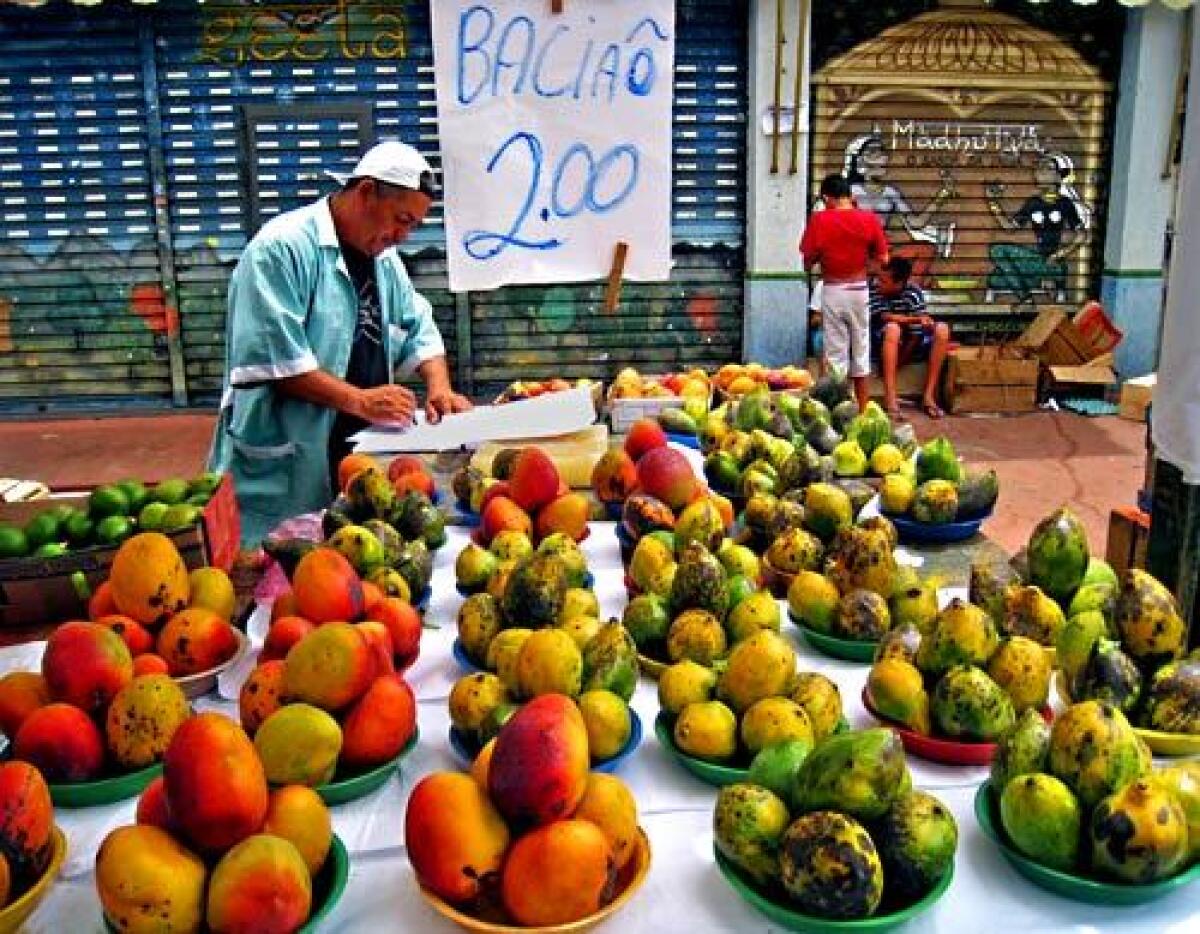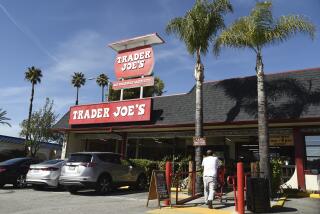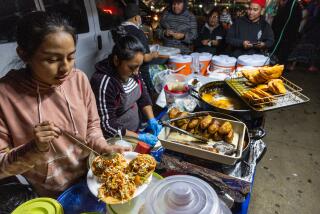Hone bargaining skills at São Paulo, Brazil’s many farmers markets and crafts fairs

The early bird may get the worm, but Camila Barrera Daza and boyfriend Kristian Kalva got the best deal by being among the last, not the first.
In the final minutes of the Saturday farmers market near their apartment in the Vila Madalena neighborhood of São Paulo, the couple negotiated with a vendor for four plump passion fruits. The asking price was about $2.25, but Kalva paid $1.40 for the fruit.
As a two-year resident of São Paulo, I often found myself in Kalva’s shoes — haggling over such things as tomatoes or a handmade rug — when navigating the city’s expansive circuit of farmers and artisanal markets. Though they’re popular with bargain-hunting locals, the feiras also provide visitors with a good introduction to Brazilian culture and food.
The couple’s late arrival is typical of veteran deal-hunters. Farmers markets are relatively calm affairs until the last hour, when vendors bark out newly slashed prices so they can make room for the produce they’ll buy the next morning. The yelling injects the markets with an entertaining, buzzed energy.
Even early in the day, vendors are open to bargaining, but it should be done the Brazilian way. “There are people who immediately try to take over the negotiation,’” said fruit stand worker Juarez Sampaio. “A Brazilian won’t accept it. Speak with a smile.”
Don’t speak Portuguese? Indicate numbers with your fingers or carry a calculator. Falling back on high school Spanish helps; the words for numbers in both languages are similar but you’ll need to remember the exchange rate because you’ll be negotiating in Brazilian reais (the plural of real).
Vila Madalena’s weekly market, just one of the 888 farmers markets in the city, is my favorite. It’s set in the middle of bars and boutiques in converted houses, and it boasts diverse produce and prime people-watching.
Limit yourself to a light breakfast before coming here. Vendors are competitive, often forcing fruit samples upon you if you as much as glance at their goods. It’s hard to balk, though, with produce this delicious — papaya, jaca (jackfruit), goiaba (guava), caju (cashew apple, whence the nut comes, but don’t try to get at it — the shell has a resin that irritates skin), pitaya (dragonfruit), graviola (soursop), jaboticaba and pinha (sugar apple). Also check out local varieties of familiar fruit: The Bahian mango is impossibly succulent, and the slender, sweet maça banana may provoke nighttime cravings.
Neighborhood demographics dictate the starting prices. For example, most shoppers I spoke with at the Haddock Lobo Sunday market in the ritzy Jardins district agreed that produce there is pricier than surrounding areas’ markets but said its central location was unmatched.
Paulistas, as residents are called, say a feira experience isn’t complete without a stop at the pastel tent, though a health-conscious American sweating in the humidity of summer may think otherwise. Ubiquitous at farmers markets, pasteis are fried dough pockets stuffed with fillings such as meat or cheese. After scoring three ripe mangoes for $2.80 from a seller packing away his tables at the parking lot of the Pacaembú soccer stadium, I joined the long line at the award-winning Pastel da Maria stand. I ordered my favorite — dried meat (carne seca) with cheese, and washed it down with refreshing sugarcane juice mixed with pineapple.
Artisanal fairs
At the Liberdade artisanal fair in São Paulo’s Little Tokyo, visitors gorge on delicacies; giant gyozas, shrimp-stuffed tempura discs and freshly made imagawayaki cakes with purplish-red gooey azuki bean paste interiors that cost about $1.40 each. Liberdade also features a diversity of services and goods, including Japanese fortunetelling and origami mobiles.
The city’s oldest fair, at Praça da República, launched in 1954 as a marketplace for stamp and coin collectors and still happens every Sunday. The draw is the fine-arts area along the park’s northern perimeter.
“The plaza is traditional [for artists], and many of them rose to fame from here,” said Geraldo Magela, who with his wife, Marlene, paints scenes from their native Paraíba state. Before he became well known, naïve artist Waldomiro de Deus sold his canvases directly to the public here in the ‘70s and ‘80s.
São Paulo also has a network of antiques fairs. The 30-year-old MASP antiques fair, underneath the São Paulo Museum of Art, has 120 stands featuring unexpected finds from around the globe, such as a heavily detailed leather and silver belt from Yemen and 19th century German porcelain medicine droppers.
But unlike at farmers markets, vendors here drive a hard bargain. “You need to negotiate. If you pay cash, the discount should be 25%, 30%,” said shopper Walerio Giacaglia. Despite that advice, he was able to wrangle only 15% off an ornate silver bracelet from Mexico.
Some art and antiques fairs, including the sophisticated Saturday market at Praça Benedito Calixto, have evolved into social affairs for friends. Here, the young crowd tends to browse (rather than buy) antique chandeliers, novelty flattened glass bottles and vintage clothing before wandering into the bars, restaurants and boutiques on the market’s periphery. Live chorinho music — a traditional Brazilian sound often compared to ragtime — and demonstrations of the Afro-Brazilian martial arts dance called capoeira complete the scene.
The Sunday Bixiga fair in the old Italian district of Bela Vista is a bit like Benedito Calixto, a cheaper alternative to the MASP fair but also a place to stroll the aisles with pals, perusing vintage matchbooks and retro ‘70s furniture.
The day I went, I stopped at a used vinyl stand and selected four albums, marked at $4.50 each, from música popular brasileira legends Chico Buarque and Tim Maia. Smiling as widely as I could, I put my Brazilian-style bargaining skills to the test.
“Thirteen for all,” the seller said.
Without a further word, I handed over my reais.
Sometimes you have to take advantage of a deal when you spot one.
More to Read
Sign up for The Wild
We’ll help you find the best places to hike, bike and run, as well as the perfect silent spots for meditation and yoga.
You may occasionally receive promotional content from the Los Angeles Times.






